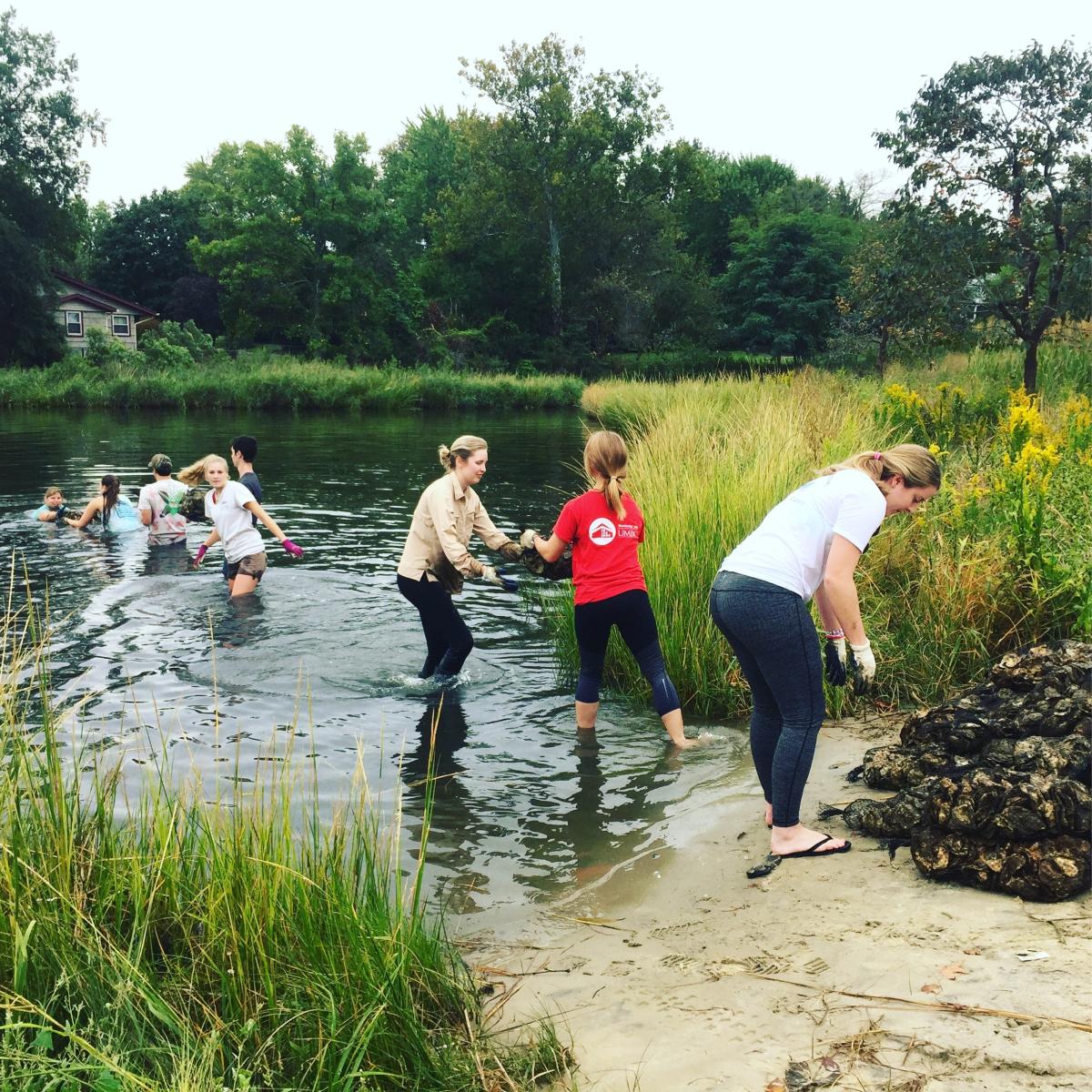Oysters in Maryland and Virginia waters are experiencing a recovery thanks to continued conservation efforts in specific locations.
The Chesapeake Bay Program has announced that efforts to restore healthy oyster reefs in ten tributaries of the Chesapeake Bay by 2025 are on track. In the 2014 Chesapeake Bay Watershed Agreement, Chesapeake Bay Program partners, including the National Oceanic and Atmospheric Administration, U.S. Army Corps of Engineers, Maryland Department of Natural Resources, Virginia Marine Resources Commission, as well as several nonprofits and academic institutions, committed committed to restore native oyster habitat and populations in ten tributaries and ensure their protection by 2025.
“The achievement of this large-scale oyster restoration work over the past decade has become the global model for restoring oyster populations and reef habitats,” said Allison Colden, executive director of the Chesapeake Bay Foundation Maryland. “The success of this work reflects the importance of strong partnerships and innovation in achieving a long-term goal in the larger effort to restore the Chesapeake Bay. It is critical to build on the success of these oyster restoration projects and maintain momentum by expanding these initiatives to more tributaries.”
Currently, eight of the ten original tributaries selected for large-scale restoration are considered complete. The remaining two — the Manokin River in Maryland and the Lynnhaven River in Virginia — still have 222 and 38 hectares respectively to go. By the end of 2023, 1,572 hectares of oyster reefs will have been restored across the Chesapeake Bay, the equivalent of 2,075 football fields.
More about education rates in Maryland Find out where Maryland ranks in the national report showing four key areas of education
After each tributary was selected for restoration, scientists developed a strategy to guide the process of building and seeding reefs, and to monitor and evaluate their progress. Monitoring and evaluation will take place at three- and six-year intervals and will continue beyond 2025.
‘Numerous economic opportunities’ in oyster conservation efforts
“Restored oyster reefs support a healthy Chesapeake Bay, countless economic opportunities and strengthen our resiliency to climate change for communities throughout the Bay watershed,” Colden said.
These activities are critical to determining the overall success of the restoration by monitoring the recruitment of new oysters, the number that survived into the early stages of planting, natural mortality, disease status, growth, reproduction and the accumulation of shells.
The monitoring and evaluation phase is underway for the following tributaries: Little Choptank (Md.), Tred Avon (Md.), Upper St. Mary’s (Md.), Piankatank (Va.), Lower York (Va.), Lafayette (Va.) and Grand Wicomico (Va.). Large-scale oyster restoration in Harris Creek (Md.) is considered complete now that its monitoring and evaluation phase has been completed.
In April 2024, Virginia’s lower York River was celebrated as the eighth oyster restoration site to be completed. As part of this project, more than 200 hectares of reef was constructed.
With positive numbers across the region, Virginia groups reiterated their support for such programs.
“I am extremely proud of the partnership between the Virginia Marine Resources Commission’s Shellfish Management Division and the NOAA Chesapeake Bay Office for their critical role in promoting oyster recovery in these five tributaries of the Chesapeake Bay,” said Jamie L .Green, Commissioner of Virginia Marine Resources. Commission.
Green added that there was also a successful completion of the Lower York River Oyster Restoration project. The latest program aimed to “empower Virginia’s vital commercial fishermen” and sets a national standard for sustainable coastal conservation.
More about state candidate debates Alsobrooks and Hogan agree to debate in the fall. What comes next? History may have clues.
Oyster harvest reaches record high for Maryland
The foundation’s announcement followed a recent report from the Maryland Department of Resources showing that state aquaculture contracts produced record oyster yields in 2023.
Maryland’s growing aquaculture operations will harvest a record 94,286 bushels of oysters in 2023, the Maryland Department of Natural Resources reported. In Maryland, shellfish farms can enter into submerged land leases and water column leases, which are intended for growing shellfish in cages or other containers in the water.
The state currently leases 7,478 acres of state waters to 466 commercial shellfish operations. Of that total, 6,964.32 hectares are for submerged land leases and 514.16 hectares for water column leases.
“Although the shellfish aquaculture harvest is small compared to public fisheries, it is growing steadily and the farmer’s product is available year-round,” said Brian R. Callam, Ph.D., Aquaculture Director and Industry Enhancement Division of DNR.
More about homicide investigations in the province A murder investigation has been launched into the death of a Florida man in Wicomico County
The state’s total 2023 harvest of farmed oysters surpassed the 2022 total of 94,257 bushels. By comparison, the state’s public oyster fishery harvested 548,558 bushels during the 2021-2022 season and 722,850 bushels in the 2022-2023 season.
“It is exciting to see the progress made toward the goal of restoring oyster reef habitat in ten Chesapeake tributaries by 2025,” said Kevin Schabow, acting director of the Chesapeake Bay Office of the National Oceanic and Atmospheric Administration. “All of this work is possible because of the strong partnership of federal and state agencies, local governments, nonprofits and academic institutions committed to restoring the vast ecosystem and economic benefits that healthy oyster reefs provide.”
This article originally appeared in the Salisbury Daily Times: Chesapeake Bay oysters are experiencing a major rebound. This is why.
